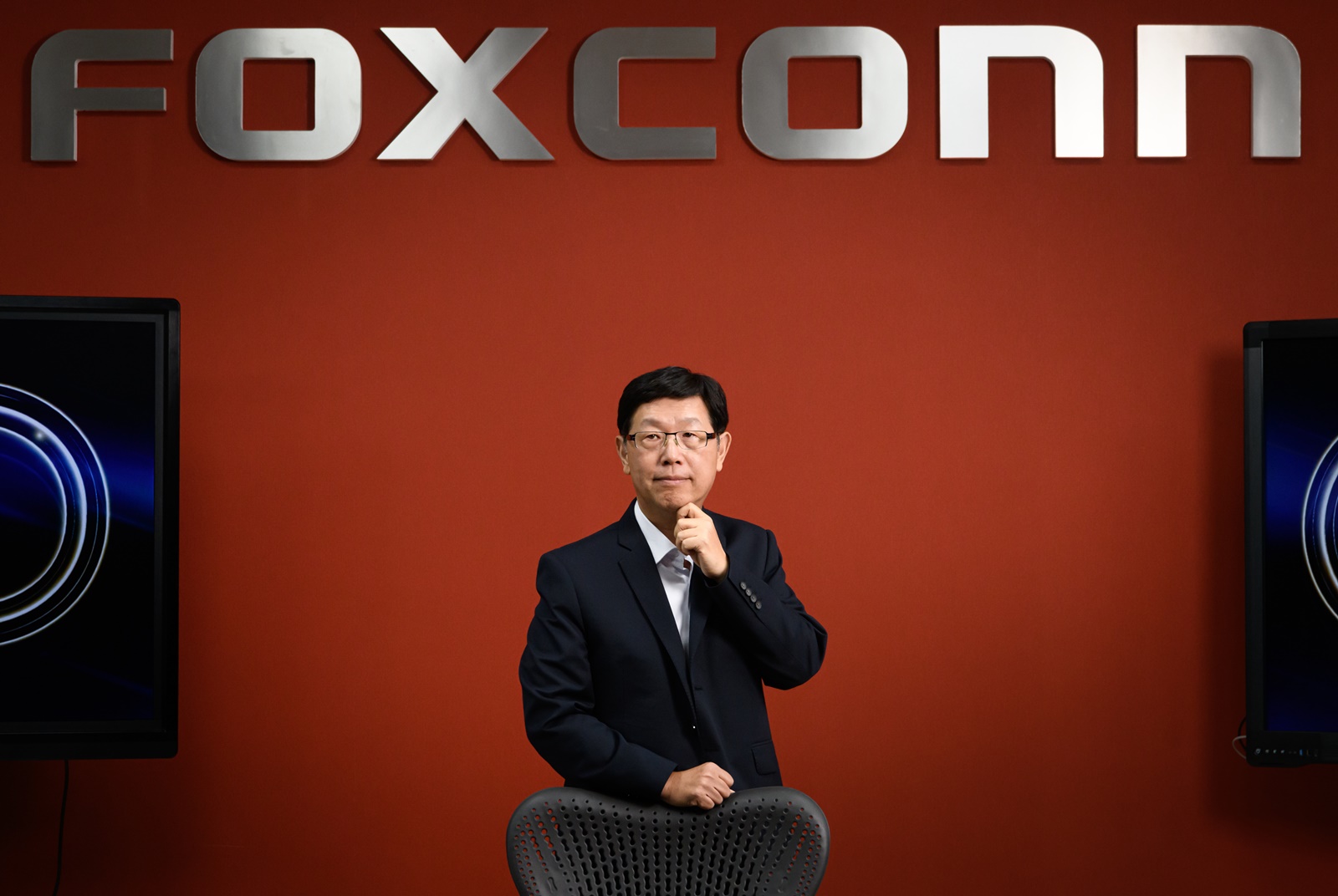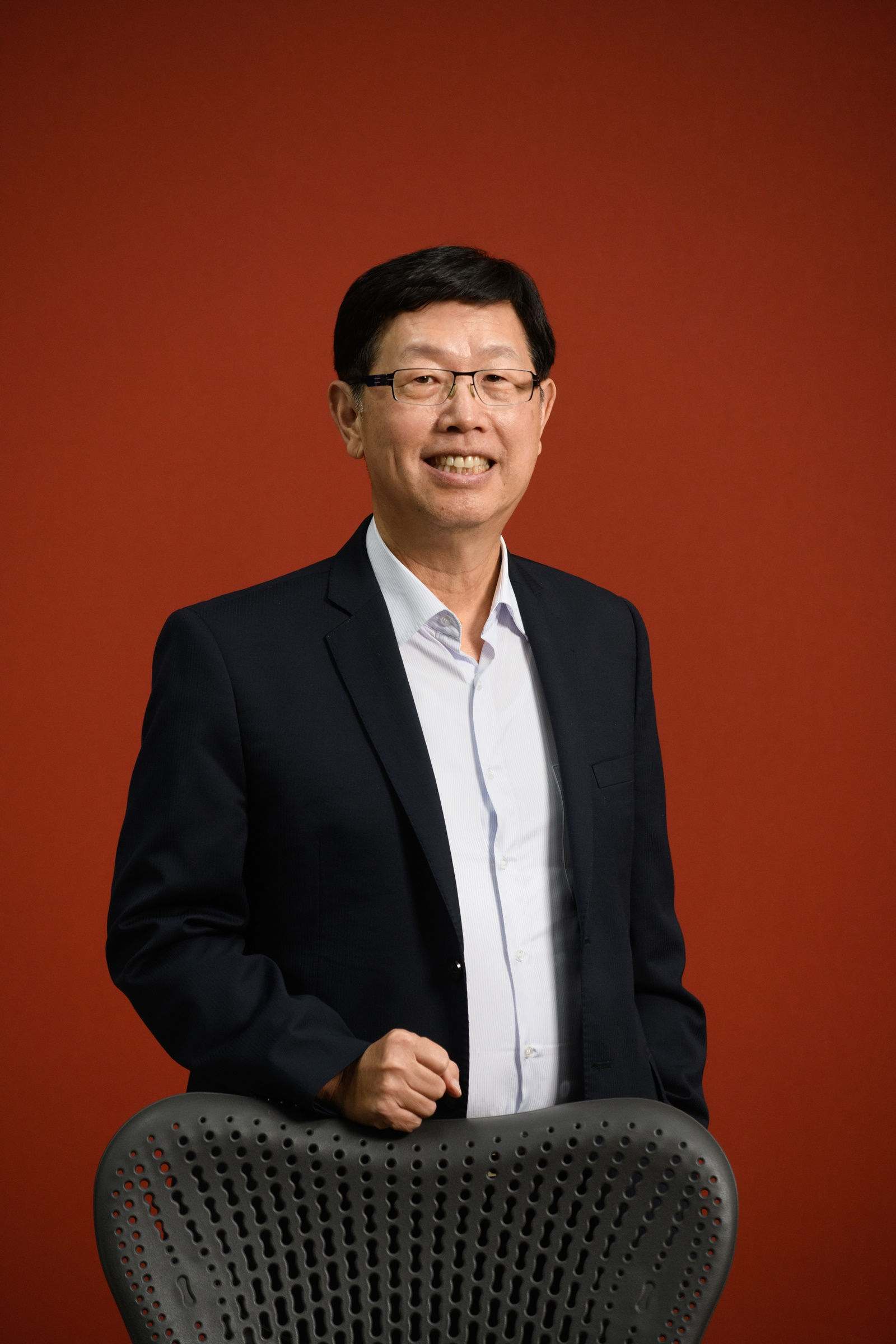Exclusive: Foxconn CEO Young Liu on his EV ambition

Source:Pei-Yin Hsieh
As the first-year anniversary of the MIH Alliance brought together by Hon Hai approaches, how can Foxconn Chairman Young Liu consolidate nearly 2,000 enterprises to lead the transformation of the company’s five-trillion empire and forge the most potent automobile platform of the future?
Views
Exclusive: Foxconn CEO Young Liu on his EV ambition
By Elaine HuangFrom CommonWealth Magazine (vol. 733 )
In mid-September, a photo of a black electric vehicle (EV) emblazoned with the Foxtron logo was posted on the Internet, leaking the secret weapon slated to be revealed on Hon Hai Tech Day a month hence. Foxtron is a joint venture between Hon Hai and Yulon Motor Corp.
Starting last year, new Hon Hai Precision Chairman Young Liu, who took office in 2019, began holding Tech Day festivities similar to those of Apple and other big tech companies. This year, Hon Hai is expected to introduce two passenger vehicles and one electric bus.
Electric vehicles represent the most critical battleground for Hon Hai Chairman Young Liu. Having assumed the mantle of CEO from company founder Terry Gou, the 65-year-old Liu is seen by observers as playing more of a “custodial” role as chairman.
When Foxconn first introduced its “3+3 Model for Transformation” led by electric vehicles to increase its net profits from five to 10 percent, it was met with widespread skepticism. People wondered if Hon Hai, which had no experience in automobile manufacturing, was serious.
However, in the year since partnering with Yulon on a joint venture, the company’s automobile manufacturing plan has proceeded at an astonishing pace. “We’ve signed nine cooperative plans,” calculates Liu.
 (Source: Pei-Yin Hsieh)
(Source: Pei-Yin Hsieh)
Unlike other major electronics companies that are making just parts for EVs - for example Pegatron providing Tesla’s central computer, Quanta securing self-driving car servers, and Wistron garnering Chinese EV manufacturer NIO’s electric control system business. As the world’s largest information electronics product assembly company, Hon Hai finds itself in a Wild West situation during which global standards for EVs have not been set. It seeks not to make just parts and components, but rather to command the auto industry of the future.
Hon Hai wants to be a platform, linking with the supply chain to produce shared chassis, helping different EV makers produce cars. Multi-brand chassis mean large volume, which can compress costs and speed up EV development.
Achieving volume can help capture influence regarding international specifications. “We want to work on open platforms and find portals to lead Taiwan suppliers out into the world,” says Liu, summing up the company’s ambitions.
Liu knows it first needs to understand automobile manufacturing.
Key puzzle piece #1: Automaker alliances
Joint venture with Yulon
Early last year, not long after assuming the CEO position, Liu observed how Yulon subsidiary HAITEC, experiencing heavy financial burdens, was planning to move its R&D engineers from its Xindian headquarters to the manufacturing site in Miaoli.
Identifying an opportunity, within a month he had completed the purchase of a controlling 51 percent interest in HAITEC for NT$7.9 billion, forming the joint venture Foxtron with Yulon.
Liu convinced Yulon that, given Taiwan’s small market, it should instead target automakers and governments rather than individual consumers. “Foxtron can provide complete car design, key parts, as well as IDM (Integration Module Design and manufacturing) OEM services,” explains Liu. This would mean that Foxtron could follow Hon Hai’s brand OEM model.
As a venture that brings together conventional car manufacturing collaborating on the production of electric vehicles, Foxtron is a rare example in the international scene.
Tso Chi-sen, who previously worked at the HAITEC Engineering Center (predecessor to Foxtron), and participated in the design and production of the Yue Loong Feeling 101, offers candidly that Hon Hai had the resources and Yulon had the know-how, making it a great pairing.
“Foxtron is in charge of automobile specs, and Hon Hai knows about the vertical division of labor, identifying suppliers and integrating parts according to specs,” Tso explains.
After getting started on chassis platform development early last year, Foxtron will be introducing three prototype cars at this year’s Technology Day, projected to reach the market in 2023. This is faster than the typical automobile development cycle by at least two years.
Liu plans to announce the formation of the Hon Hai Software Development Center during the company’s Technology Day festivities, which will pool together around 500 automotive software engineers. “In the future, differentiated automobiles will rely on software, updating functionality over-the-air, like smartphones - using software to keep making hardware feel new,” he remarks.
The next puzzle piece involved establishing a supply chain. So Hon Hai formed the MIH Open Platform Alliance (MIH Alliance), tapping former Fiat Chrysler Automotive CEO and NIO co-founder Jack Cheng to take the helm. To date, the MIH Alliance has welcomed 1,900 companies aboard.
 (Source: MIH)
(Source: MIH)
Key puzzle piece #2: The formation of an open source alliance
The MIH Alliance’s function is to bring together supply chain businesses with different strengths - including auto parts, technology, and materials - with a good division of functions, to form an internationally competitive alliance of EV startups. The alliance needs to provide solutions, with an eye toward the global EV market.
One of Hon Hai’s competitive strengths has been top-to-bottom control over parts and components. So why would it need to rely on others for help with electric vehicles?
“A smartphone contains five or six hundred parts, with a maximum in-house manufacturing rate of 60 percent. Each EV contains five to six thousand parts, which Hon Hai could never handle on its own,” he offers pragmatically.
“We’re brawling to offer solutions. Automakers also want to find solution providers, not just a parts provider,” notes Jack Cheng.
Still, whether the MIH Alliance can become parts and components vendors’ boss remains to be seen. In the past, small- and medium-sized enterprise circles have heard from time to time of cases in which Hon Hai ultimately acquires a supplier. “Will Hon Hai end up just swallowing it up?” asks one anonymous MIH member in private, revealing a wait-and-see stance.
Key puzzle piece #3: Opening up portals
Acquiring more users, seizing influence over specs
While he holds onto the dream of setting international standards, Liu’s more practical hope is that more people use EVs produced by the Hon Hai platform, so that specifications naturally fall into place.
Citing the example of Android, when Google’s mobile handset operating system was released, it had no outlet at first. But once it had found HTC, business took off.
Just this year, in addition to Yulon, Liu entered a joint venture with Chinese automaker Geely Auto to provide EV solutions. Next, it signed Memoranda of Understanding (MoU) with U.S.-based EV brand Fisker and Stellantis, the world’s fourth-largest automaker. As a result, Fisker’s second EV model, the Pear, will use Foxtron’s chassis platform and both software and hardware solutions from MIH members in preparation for a 2023 launch.
 (Source: Getty Images)
(Source: Getty Images)
Just recently, in early October, Hon Hai announced that it has agreed to invest US$230,000 to purchase manufacturing facilities from Ohio-based commercial electric truck maker Lordstown Motors. With this move, Hon Hai is set to acquire a local EV production line in the US, and in the future, in addition to producing Lordstown Motors trucks, Fisker’s production will likely be at the same plant.
So why are automakers using the Hon Hai platform? “This is their pain point,” explains Liu.
Liu reckons that it takes three to four years to develop an electric vehicle, requiring investment of at least NT$10 million from R&D to full production, $4 billion of which goes towards tooling costs. As more and more automakers and vehicle models adopt shared platforms, this can reduce the costs apportioned to tooling, as well as accelerate time to market for new models.
Key puzzle piece #4: Key components
Positioning in motors, compound semiconductors, batteries
Preparing for future challenges
On another hand, Liu is positioning in key components - motors, batteries, and semiconductors.
This past July, Hon Hai formed a company in Taiwan with major EV motor company Nidec, took control of battery materials company Long Time Tech, and purchased a stake in Giga Solar, China Steel Chemical Corp. The company also announced its intention to produce anode material for power batteries, making inroads into two key components - motor systems and batteries, that account for half the cost of an EV.
Hon Hai subsequently also bought Macronix’s six-inch wafer fab, in preparation for developing composite semiconductors to meet the high future demand for automobile chipsets.
Sources have revealed that Hon Hai is also in talks about potential cooperation with major China-based battery maker Contemporary Amperex Technology (CATL), and does not rule out investing in mountainous land for mining rare earth metals.
Key puzzle piece #5: Localized production
The final piece of the EV industry puzzle is localized production.
In a departure from Hon Hai’s established model as sole investor in assembly plants in China’s Shenzhen and Zhengzhou, future Hon Hai EV plants will follow the BOL (Build, Operate, and Localize) model. In other words, co-investment with partners to set up and operate local plants and subsequently hit the local market.
“Previously, when Hon Hai went to a new area, we would be the sole investor in the company and manufacturing, doing everything ourselves,” explains Young Liu.
Former U.S. President Donald J. Trump stirred up the U.S.-China trade war, and even more importantly taught governments around the world the importance of local manufacturing. Today, with ample capital available around the world, Hon Hai’s thinking must change.
Hon Hai signed a contract with Thailand Petroleum in July over a joint venture to set up an EV manufacturing plant in Thailand. The joint venture will follow the BOL approach, with Hon Hai owning just 40 percent of the shares to its counterpart’s 60 percent, so as to incentivize its partner to go to market.
 (Source: Pei-Yin Hsieh)
(Source: Pei-Yin Hsieh)
Liu’s total mobilization of the five puzzle pieces has not been fully implemented yet, and observers are waiting to see how the market responds.
“We already have accomplished Tier 1 solution providers like Bosch and Continental, so Hon Hai really needs to prove itself,” one senior technology industry executive proclaims.
“Today’s young people have been working on PC computers for the last 30 years, and qualified professionals are aging. Now nobody is going to wait another 30 years; they want to go down a new road, and that is EV,” Liu is announcing to himself, to a Hon Hai undergoing transformation, and a Taiwanese industry in the midst of transition.
Have you read?
♦ Will electric vehicles send Hon Hai’s gross margin over 10%?
♦ Taiwan’s Tesla Boom, and Looking for More
♦ Taiwan’s EV Supply Chain Cranks into High Gear
Translated by David Toman
Edited by TC Lin
Uploaded by Penny Chiang






